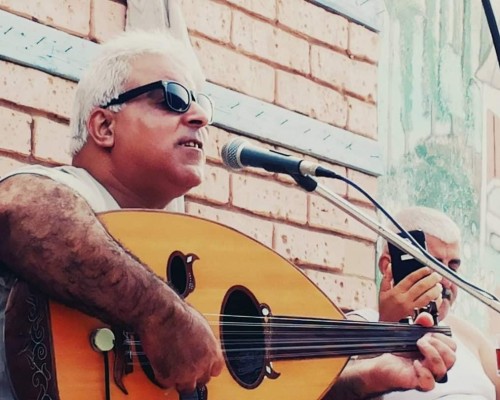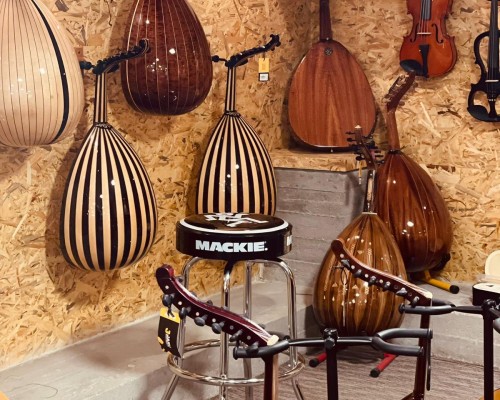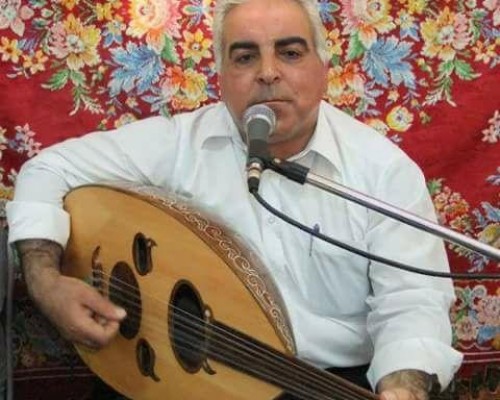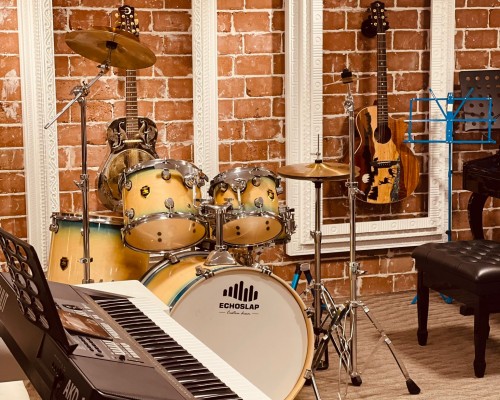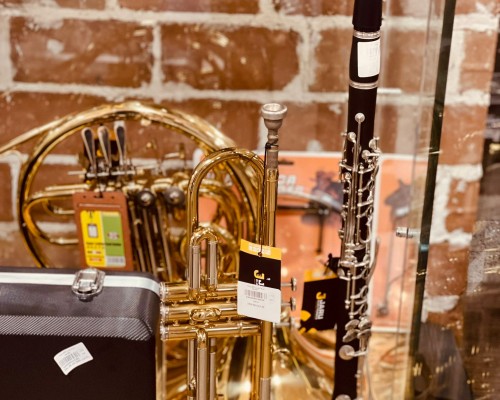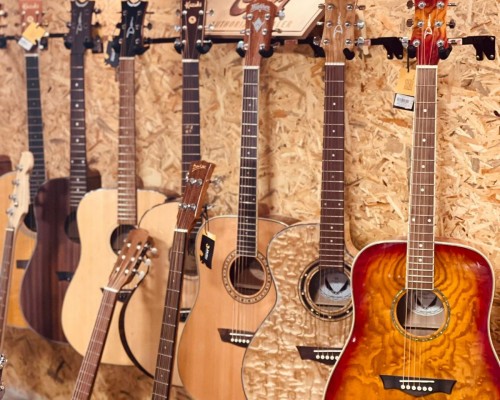Kareman Albohisi
In the early eighties, the journey of 56-year-old musician Hassan Al-Ustaz began in the Gaza Strip, during a period when popular music emerged and could be heard at weddings and social events.
There were some bands that offered classical and sometimes spiritual music. Since the 'oud' was the most common instrument in folk and traditional music, Al-Ustaz's passion began to learn to play it at that time, when he was only fourteen years old.
The boy embarked on his musical journey by learning from musician Mohammed al-Jarrah, who described him: "He was a talented and beloved teacher, and I mastered music through him after borrowing several instruments, because they were rarely available at that time".
Today, he owns four instruments and heads a musical ensemble, among which is the oud, which he describes as his 'beloved instrument', while the oud has originality and heritage in the hearts of musicians due to its long history in Arabic music, as it is considered a symbol of oriental tradition and culture.
From the oud to the saxophone, Al-Ustaz mastered the playing, while the latter is characterized by its warm voice and is one of the instruments used in modern music, especially jazz, which is the most popular musical genre around the world.
On the saxophone, Al-Ustaz performed in military music during his work as an employee in the Palestinian police then formed a Palestinian musical band in the West Bank and began to perform international music, anthems, and the national anthem to various countries.
During his work, Mr. Al-Sayed participated in receiving many prominent figures locally and internationally, including the late Palestinian President Yasser Arafat, former South African President Nelson Mandela, and former French President Jacques Chirac, in addition to his participation in the opening of Gaza Airport in 1998.
There is no doubt that Al-Ustaz was influenced during his artistic career by many Arab singers and musicians who made an impact in the world of Arab music, especially Mohamed Abdel Wahab, who was full of talent for playing the oud and violin, along with Sayed Darwish, one of the most famous musicians of folk song in the Arab world, as well as the Lebanese Zaki Nassif, who is considered the most famous Arab musician in the history of the oud.
"I used to practice music next to my work, and then with time and continuous practice it became a real passion, and I still participate today in local celebrations despite the challenges faced by the music field in the Gaza Strip, as it is a graveyard for art and artists who dig in the rock to make people happy," the musician said.
Musical artists in Gaza face many challenges, ranging from the lack of appropriate musical instruments and materials to make them, the lack of financial and cultural support, to the cultural and social restrictions imposed on music.
The Gaza Strip's 'conservative' environment imposes various restrictions on the practice of music, including religious restrictions, as some consider the music to be contrary to religious beliefs, while some government restrictions may impose restrictions on permitted types of music or content contained in songs.
While national songs and anthems such as 'Ataba and Mijana' accompany the 'dabke dance', are an integral part of popular musical culture and occupy an important place in popular musical heritage and folklore.
In addition to these restrictions on music, there are social challenges, which some see as unacceptable, and there are still reservations about women musicians in particular, including the young woman Shahd Tulba (23 years old), who came out of an artistic family and is currently learning the oud but she loses hope of working in the musical field.
She graduated from journalism and media, but since childhood, she tends to the arts of all kinds, especially music, she says, "My father and uncles formed a musical band in the eighties for a short period of their love and passion in the world of music, as playing and singing is a hobby in our family."
The girl had received a training course in music writing, but her family, although it is an artistic family, refused, on the grounds that it was not in line with Gaza society and that opinions differed about whether it was 'halal or haram' religiously.
Recently, Tulba began learning to play the oud that she sees as the closest to her personality, and she says, "When I go out carrying the oud, I see many people looking at me with surprise, in our society the idea is not acceptable, especially for girls."
The field of selling musical instruments may seem uncommon in the Gaza Strip, but the 'Al-Gro Music and Sound Company' was one of the first companies to work in this field, as it was opened in (1978), and was very interested in selling musical and vocal instruments.
Rana Al Jarro, the company's marketing and public relations officer, believes that the demand for the music field has increased over time compared to the past, which reflects people's interest and awareness.
In addition to selling instruments that Al-Jarrou company faces challenges in bringing in from land crossings, the company offers several training courses for people interested in the field of music and the use of musical instruments.
Al-Ustaz and Tulba talk about the 'oud' as being close to the heart and what Al-Jarrou pointed out that many people prefer it, while those interested in Western music are turning to the 'guitar', which girls face a challenge in society's acceptance of the idea of playing it, as they are criticized when they carry it in public, according to some of them.
Despite all the constraints of stereotypical views of music in the Gaza Strip that may hinder the development of the local music scene, musicians defy the difficult reality by taking advantage of the resources available to them in every way.
They also use music to express their resistance and strength through their melodies and prove that art can transcend boundaries and bring about positive change in people's daily lives, instilling hope in them.


